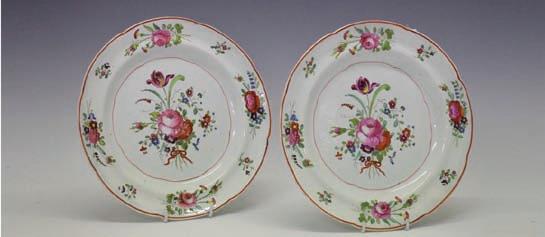
2 minute read
HOME & ANTIQUES
Expert opinion
From Chris Yeo, Valuer at Clevedon Salerooms and regular expert on BBC’s Antiques Roadshow
Advertisement
Well served
That domestic goddess of the Victorian era, Mrs Beeton, claimed all creatures eat, but “man only dines”. If she were still with us, Mrs B. would surely be aghast to learn that the dining room is fast going the way of the dodo. With today’s taste for informality in all things, the room that was once the very definition of middle class respectability has been brought to the brink of obsolescence by kitchen suppers and take-aways in front of the telly.
Before you drown in grief, let’s not forget that what, how and where we consume our food has always been subject to the vagaries of fashion. Around 10,000 B.C. the happy Homo Sapiens of Cheddar caves washed down their meals –usually animal, occasionally human - with the Stone Age equivalent of Chateauneuf du Pape from a human skull passed from person to person (archaeologists have yet to discover whether “pinkies” were raised). Take your time-machine forward to the Georgian period and dinner was a very different affair to that which we would recognise today. Fashionable meals consisted of three courses, each made up of lots of different dishes, a mixture of sweet and savoury, hot and cold. All the food was put on the table at once, with diners taking a little of what they fancied, rather like a sit-down buffet. People were not told where to sit and it must have been a bit of a free for all as people jostled to be near a particular person or within reach of their favourite dish. The timid would have had a hard time as it was considered bad form to ask a fellow diner to pass a dish and the servants would have been busy serving wine. There might also be a musical accompaniment, with – for reasons on which we can only speculate –French horn ensembles being thought particularly appropriate.
The niceties of fine dining probably mattered little to the person who “souvenired” a pair of plates which recently appeared at Clevedon Salerooms. Made in Bristol in around 1820, a clue to their provenance was provided by an ‘M H’ monogram painted on the back, indicating they had been made for the Mansion House. The Lord Mayor’s residence on Queen Square had been the scene of many grand banquets until it was trashed, looted and burnt in the Bristol Riots of 1831. Having missed their target of the Mayor – who only narrowly missed being lynched - the invaders seized the opportunity to help themselves to anything portable, including these plates, which sold for a tasty £250. ■ • clevedonsalerooms.com; @chrisyeo_antiques (Instagram)











